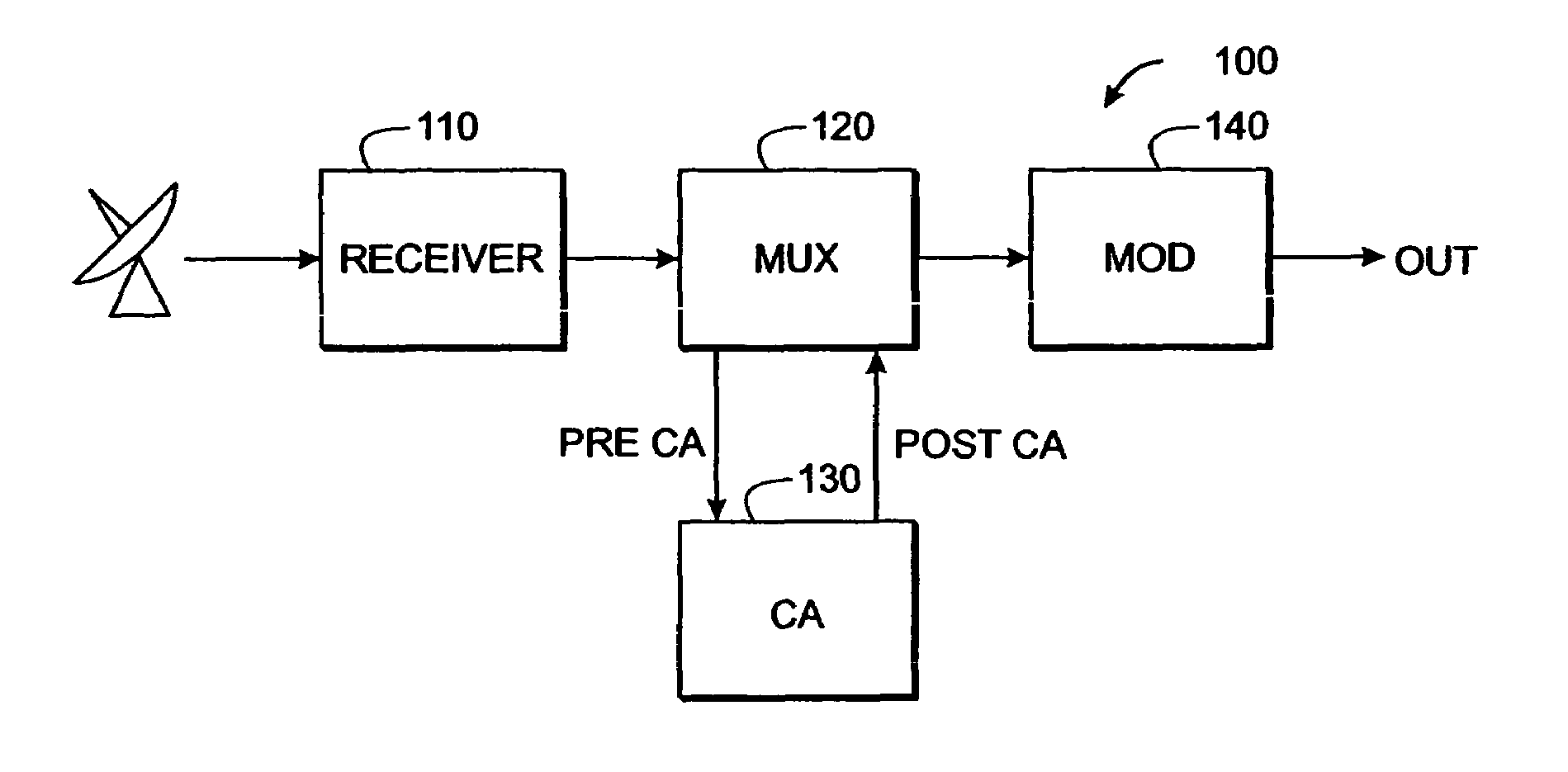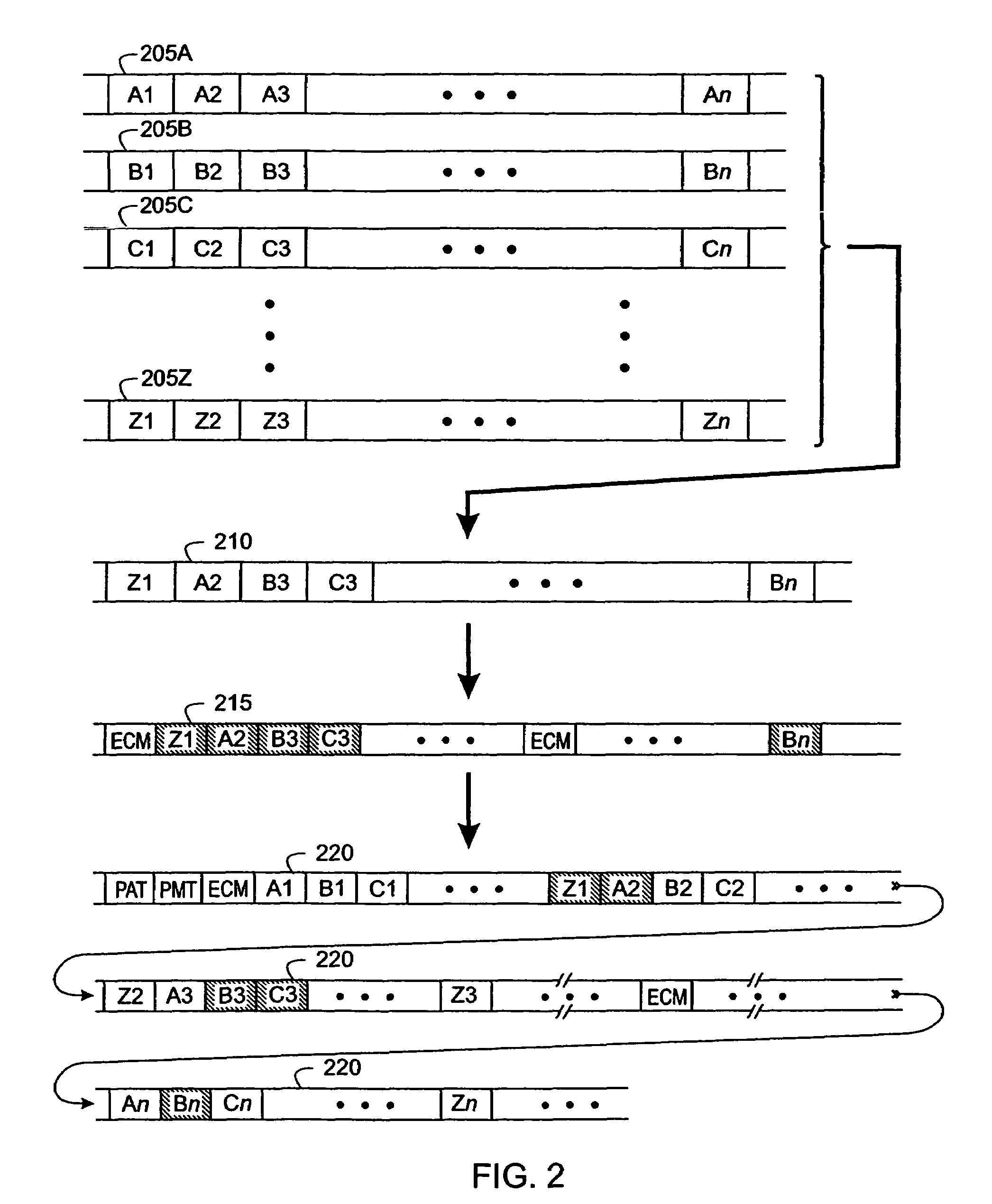Time-multiplexed multi-program encryption system
a multi-program encryption and time-multiplexing technology, applied in the field of digital television systems, can solve the problems of inability to decode components, increased complexity of recovery, and increased complexity of recovery
- Summary
- Abstract
- Description
- Claims
- Application Information
AI Technical Summary
Benefits of technology
Problems solved by technology
Method used
Image
Examples
Embodiment Construction
[0048]The present inventive technique improves utilization and throughput of digital television encryption hardware by separating one or more program streams into “critical” portions that will be encrypted and “non-critical” portions that will be transmitted “in the clear” (i.e., without encryption). This technique can work with existing CA systems, receivers, modulators, demodulators, etc., without modification of those devices.
[0049]Reference is made in the ensuing discussion described to the MPEG packet transport protocol as specified in ISO document 138180-1, “Generic Coding of Moving Pictures and Associated Audio Information: Systems” (hereinafter “MPEG Standard”) and applicable to various video, audio, and data representations. Also, US Patent Application Publication Number US2003 / 0026423 by Unger and Candelore, “Critical Packet Partial Encryption” (hereinafter “UNGER”), and US Patent Application Publication Number US2003 / 0021412 by Candelore, Unger and Pedlow, “Partial Encryp...
PUM
 Login to View More
Login to View More Abstract
Description
Claims
Application Information
 Login to View More
Login to View More - R&D
- Intellectual Property
- Life Sciences
- Materials
- Tech Scout
- Unparalleled Data Quality
- Higher Quality Content
- 60% Fewer Hallucinations
Browse by: Latest US Patents, China's latest patents, Technical Efficacy Thesaurus, Application Domain, Technology Topic, Popular Technical Reports.
© 2025 PatSnap. All rights reserved.Legal|Privacy policy|Modern Slavery Act Transparency Statement|Sitemap|About US| Contact US: help@patsnap.com



